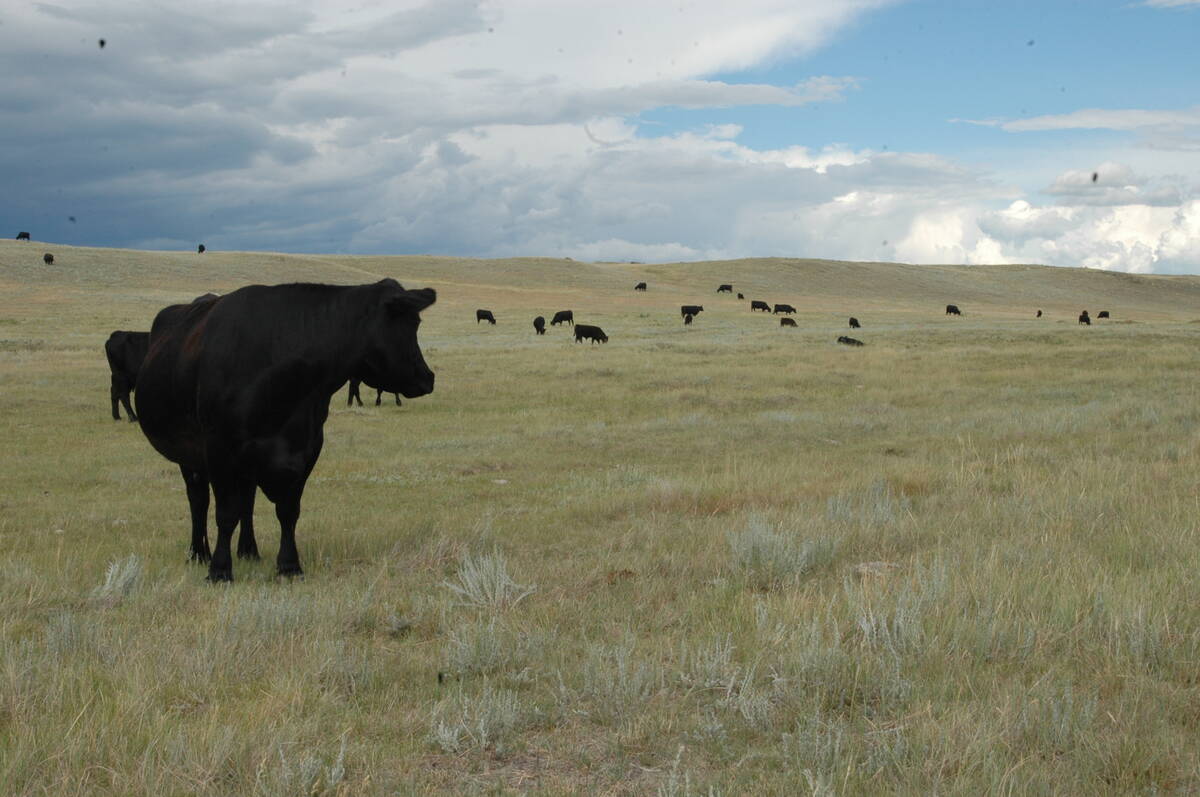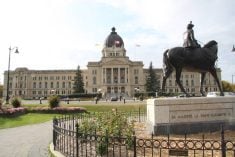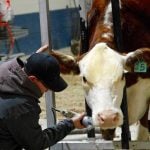EDMONTON – Alberta’s agriculture minister has rejected a request for $16 per pig aid by the province’s hog producers. Shirley McClellan told producers to wait and see how the new national agriculture aid program will help them.
Alberta producers can apply for a cash advance under the $5.2 billion Canadian Agricultural Income Stabilization Program.
“The good news is the CAISP program. If you could deal with CAISP tomorrow you can have a cash injection and right away. Is that a better way to go than risk a countervail?” McClellan asked during the Alberta Pork Producers annual meeting.
Read Also

Canadian Food Inspection Agency slammed for handling of bovine tuberculosis case
The federal government leans heavily on producers to “take one for the team” and risk their livelihoods without any reassurance of support.
“If we give you a per head payment and you get slapped with a countervail the next day, I don’t expect to get a lot of cards of thanks, even though it gets you by this week or next week,” said McClellan.
She said giving the province’s 1,450 hog producers a payment would attract the attention of American pork producers who would see it as a direct subsidy.
Many of the farmers at the meeting were looking for a direct payment like the government gave beef producers. Few believe CAISP would be quick or help producers whose costs to raise a pig are higher than what they receive.
“Quite frankly I’m disappointed there wasn’t anything solid. That doesn’t give us much hope,” said Jurgen Preugschas of Mayerthorpe, Alta. He has plugged his farm income and expense numbers into a test case that showed CAISP wouldn’t help save hog producers from disaster.
“CAISP pays a little but it’s not near enough to cover close to our losses,” said Preugschas, who is still waiting for money from last year’s Farm Income Disaster Plan.
“The programs are so backlogged. We never see anything immediately.”
It costs $1.40-$1.50 per kilogram to raise a hog in Alberta. Producers now receive about $1.14-$1.15 per kg for a finished animal.
Ed Schultz, general manager of Alberta Pork, said he doesn’t believe a $16-per-head payment would spark a countervail challenge because producers can prove the BSE crisis in cattle caused the price of hogs to drop.
More Canadians are eating beef to support the cattle industry, which forced more Canadian hogs to be shipped to the United States. That in turn forced American hog prices down five percent, which is where Canadian prices sit, said Schultz.
In addition, pork slaughter plants are demanding that hog producers no longer feed meat and bone meal, but instead use more expensive vegetable protein from soybeans or canola.
Schultz estimated the rise in the Canadian dollar has cost producers $30 a hog.
Dave Price, chair of the Sunterra Group of Companies, which raises hogs and cattle, said government aid to beef producers hurt by BSE and grain producers hurt by drought has affected the price of hogs.
“I’m the last guy to say we want government money into the industry, but at the same time if government money into another industry is taking money out of our industry, then that’s different. I think we need to recognize the impact and offset it one way or another,” said Price of Acme, Alta.
Jack Moerman, chair of Alberta Pork, said government has to realize the hog industry is in crisis.
“The hog producers in this province have been in palliative care for the last few months. There’s been virtually no money made in the last year and a half,” said Moerman.
Ten years ago there were 4,500 hog producers in the province. Last year there were 1,800. This year 250 producers have left the business because of high feed prices, rising utility bills, a high Canadian dollar and low prices.
“These facts and figures, I don’t believe they adequately convey the pain and the stress that our producers have been facing,” said Moerman.
Garfield Buck of Peers, Alta., said he and other producers are in survival mode.
“The reason we’re surviving is we’re eating up what equity we have on the farm to survive.”
In 1998 and 1999, during the last price crash, Buck took out a loan to pay the bills. He did it again in 2002, but he has drawn a line in the sand this year.
“We said enough is enough. It’s going to work or we’re going to get out,” said Buck.
Roger Charbonneau of St. Lina, Alta., said he has set July 2004 as the date he will get out of the hog business if prices don’t turn around. He refuses to lose any more money. He also doesn’t want another government loan to help him limp to good prices.
“I don’t need any more loans. Some of this was caused by BSE. We certainly hope the government sees fit to help our industry,” said Charbonneau, who added he is sad that he may be forced to leave the hog business.
“I always hoped I’d end my years doing pig production.”














